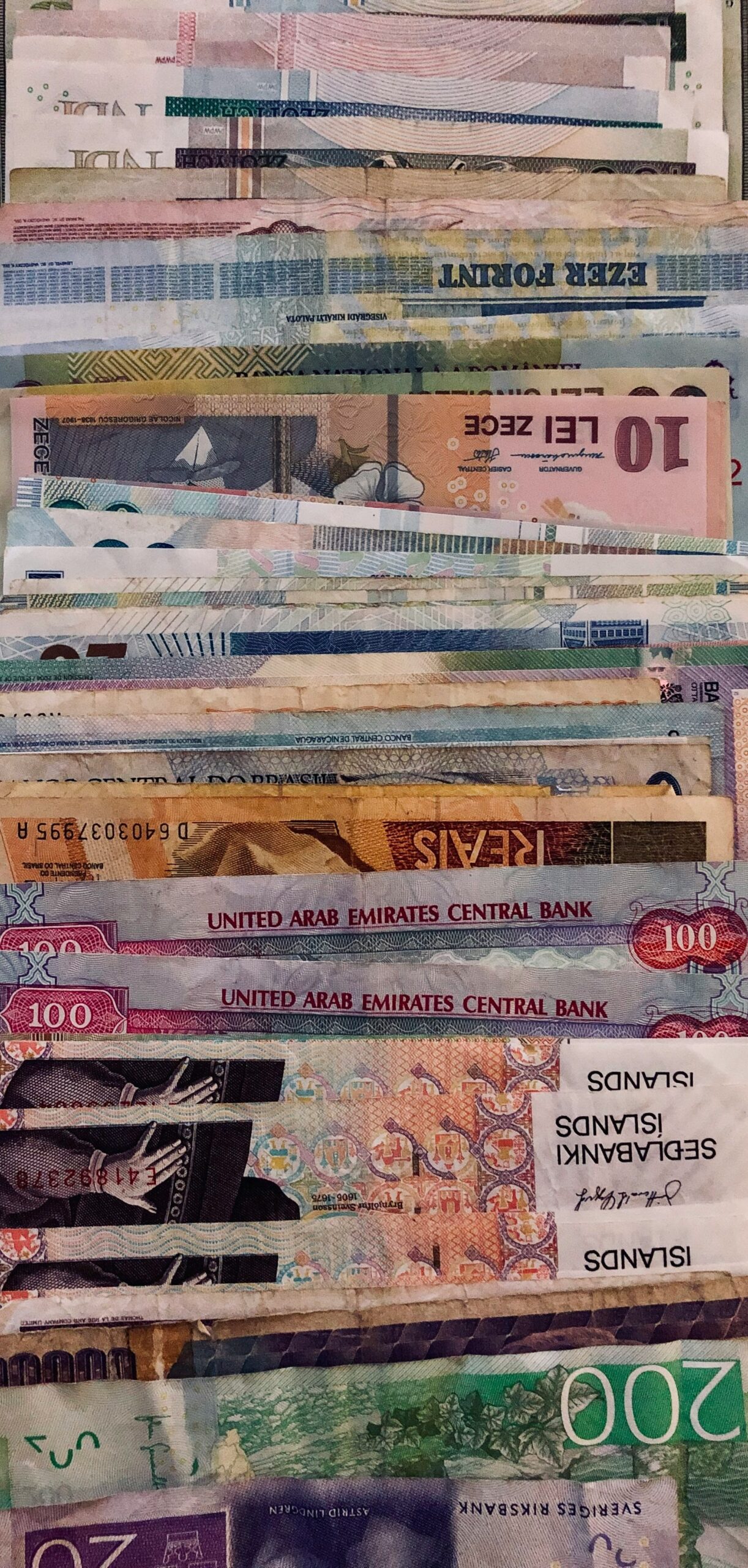Your cart is currently empty!

Building an Emergency Fund: A Step-by-Step Guide to Financial Security
Introduction to Emergency Funds
An emergency fund is a financial safety net designed to cover unexpected expenses and financial emergencies. It is a separate savings account that you can access quickly in times of need. The primary purpose of an emergency fund is to provide financial security and peace of mind, ensuring that you can handle unforeseen events without derailing your long-term financial goals.
Emergencies can manifest in various forms, from sudden medical expenses to unexpected job loss, or significant home repairs. Medical emergencies, for instance, can arise without warning and often come with substantial costs that insurance may not fully cover. An emergency fund ensures that you can pay for medical bills promptly, preventing debt accumulation and maintaining your financial stability.
Job loss is another critical scenario where an emergency fund proves invaluable. The job market can be unpredictable, and losing your source of income can place immense strain on your finances. With a well-established emergency fund, you can cover your living expenses while you search for new employment, reducing the stress associated with job loss.
Moreover, unexpected home repairs can also pose significant financial challenges. Whether it’s a leaky roof, a broken furnace, or plumbing issues, these repairs often require immediate attention and can be quite costly. An emergency fund allows you to address these repairs efficiently, ensuring that your home remains safe and habitable.
In essence, an emergency fund serves as a financial buffer that protects you from life’s uncertainties. It provides a sense of security, knowing that you have the resources to handle unexpected expenses without compromising your financial well-being. Establishing an emergency fund is a crucial step towards achieving comprehensive financial security and resilience.
Assessing Your Financial Situation
Establishing a robust emergency fund begins with a thorough assessment of your current financial situation. Understanding your financial standing is crucial in determining how much you can realistically allocate towards building this safety net. Start by evaluating your income sources. This includes your primary salary, any secondary income streams, and irregular earnings such as bonuses or freelance work. By comprehensively listing all income avenues, you gain a clear understanding of your monthly and annual earnings.
Next, examine your expenses meticulously. Categorize your expenditures into fixed costs, such as rent or mortgage payments, utilities, and insurance premiums, and variable costs, like groceries, entertainment, and dining out. This categorization helps identify areas where you might cut back to free up funds for your emergency savings. Utilizing budgeting apps like Mint or YNAB (You Need A Budget) can simplify this process by automatically tracking and categorizing your expenses.
Another critical aspect of assessing your financial situation is understanding your debt obligations. Compile a list of all outstanding debts, including credit card balances, student loans, car payments, and any other liabilities. Note the interest rates and monthly payments associated with each debt. This step is essential as it allows you to prioritize high-interest debt, which can significantly impact your ability to save.
Additionally, take stock of your existing savings and investments. This includes savings accounts, retirement funds, and any other investment vehicles. While these funds may not be immediately accessible for emergencies, knowing their value provides a comprehensive view of your financial health.
Finally, leverage tools and methods to keep track of your finances effectively. Budgeting apps and spreadsheets are invaluable in maintaining an accurate record of your income, expenses, and savings. Regularly updating these tools ensures you remain on top of your financial situation, making it easier to adjust your saving strategies as needed.
By systematically assessing your financial situation, you lay the groundwork for a solid and achievable plan to build your emergency fund. This foundational step empowers you to make informed decisions and set realistic goals, paving the way for greater financial security.
Setting Your Emergency Fund Goal
Establishing a well-defined target for your emergency fund is a crucial step towards achieving financial security. To determine the appropriate amount, it’s essential to consider your unique financial situation. Start by calculating your monthly expenses, which should include housing costs, utilities, food, transportation, insurance, and any other essential expenditures. A comprehensive review of your monthly budget will provide a clear picture of the funds you need to sustain your current lifestyle.
Once you have a firm understanding of your monthly expenses, the next factor to assess is job security. If you work in an industry with high job stability or have a secure employment contract, you might lean towards the lower end of the savings spectrum. Conversely, if your job is subject to fluctuations or you are self-employed, aiming for a higher emergency fund is prudent. Evaluating your job stability helps tailor the emergency fund goal to your specific needs.
The general recommendation from financial experts is to save an amount equivalent to three to six months’ worth of living expenses. This range provides a buffer to cover unexpected events such as medical emergencies, car repairs, or sudden unemployment. For instance, if your monthly expenses total $3,000, an emergency fund between $9,000 and $18,000 would be advisable.
Furthermore, consider any personal circumstances that might influence your savings goal. These could include dependents, health conditions, or upcoming significant life changes. By integrating these variables into your calculation, you ensure that your emergency fund is both realistic and sufficient to meet potential financial challenges.
Setting a clear and personalized emergency fund goal is a foundational element of your financial strategy. It empowers you to navigate unforeseen circumstances with confidence, knowing you have a financial cushion in place. By meticulously evaluating your expenses, job security, and personal circumstances, you can establish a solid target that supports your overall financial well-being.
When building an emergency fund, selecting the appropriate savings account is a critical step. Various types of savings accounts offer distinct benefits and limitations, and understanding these can help ensure your emergency fund is both accessible and capable of earning interest. Here, we’ll explore high-yield savings accounts, money market accounts, and certificates of deposit (CDs), examining their advantages and drawbacks.
High-Yield Savings Accounts
High-yield savings accounts are designed to offer higher interest rates compared to traditional savings accounts. These accounts are typically available through online banks, which can afford to pay higher rates due to lower overhead costs. The major advantage of high-yield savings accounts is the higher return on your savings. Additionally, these accounts usually have low fees and minimal initial deposit requirements. However, one downside is that the interest rates can fluctuate based on market conditions, affecting the predictability of your earnings. Accessibility is also a strong point, as funds can be withdrawn relatively easily in times of emergency.
Money Market Accounts
Money market accounts (MMAs) combine features of both savings and checking accounts, offering higher interest rates while providing limited check-writing and debit card access. The interest rates on MMAs are generally higher than those of traditional savings accounts but can be lower than high-yield savings accounts. One of the key benefits is the liquidity they offer, making it possible to access your funds quickly if necessary. However, MMAs often require higher minimum balances to avoid monthly fees, which could be a limitation for those just starting to build their emergency fund. Furthermore, the number of transactions per month may be restricted, potentially limiting fund accessibility.
Certificates of Deposit (CDs)
Certificates of Deposit (CDs) are time-bound savings instruments that offer fixed interest rates over a specified period, ranging from a few months to several years. The main advantage of CDs is the guaranteed interest rate, providing a predictable return on your savings. CDs generally offer higher interest rates than both high-yield savings and money market accounts, especially for longer terms. However, the trade-off is reduced liquidity; funds in a CD are locked in for the term duration, and early withdrawals typically incur penalties. Therefore, while CDs can be a good option for a portion of your emergency fund, they are less ideal for the entire fund due to their lack of immediate accessibility.
In conclusion, choosing the right savings account for your emergency fund involves evaluating your need for accessibility, interest earnings, and fee structures. Each type of account has its distinct benefits and limitations, and a balanced approach might involve diversifying your emergency fund across multiple account types to optimize both security and growth.
Creating a Savings Plan
Building an emergency fund requires a structured and disciplined approach to ensure financial security in times of unexpected expenses. The first crucial step is setting up automatic transfers from your primary bank account to a dedicated savings account. This method ensures that a portion of your income is consistently allocated towards your emergency fund without relying on your memory or discipline. Many financial institutions offer the option to set up these automatic transfers, making it a practical and efficient way to grow your savings.
Next, evaluate your current expenses to identify areas where you can cut back. Start by tracking your spending for a month to get a clear picture of where your money is going. Look for non-essential expenses, such as dining out, entertainment, and subscription services that you can reduce or eliminate. Redirecting these funds to your emergency fund can significantly accelerate your savings progress. Implementing a strict budget can also help you manage your finances more effectively and ensure that your expenses align with your savings goals.
In addition to reducing expenses, finding additional sources of income can bolster your emergency fund. Consider taking on freelance work, part-time jobs, or monetizing a hobby. Even small amounts of extra income can accumulate over time and provide a substantial boost to your savings. Platforms like gig economy apps or freelance marketplaces can offer flexible opportunities to earn extra money based on your skills and availability.
Maintaining consistency and motivation throughout the saving process is essential for success. Set clear, achievable goals and regularly review your progress to stay on track. Celebrate small milestones and remind yourself of the importance of having an emergency fund. Financial security can provide peace of mind, and knowing you have a safety net can motivate you to stay committed to your savings plan. Utilize tools such as budgeting apps or financial planners to assist in tracking your progress and maintaining discipline.
Building Your Emergency Fund Over Time
Constructing an emergency fund is a marathon, not a sprint. The key to success lies in making consistent contributions, which may initially seem daunting but can be seamlessly integrated into your daily life without requiring extreme sacrifices. A practical approach involves setting a realistic monthly savings goal. Start by analyzing your current income and expenses to identify a feasible amount that you can set aside regularly. Even small, consistent contributions will accumulate over time, establishing a robust financial safety net.
To maintain momentum, it’s essential to periodically review and adjust your savings plan. Life is dynamic, and your financial circumstances may change. Regularly reassess your budget, particularly after significant events such as a job change or a new financial obligation. Adjust your savings rate accordingly to ensure that your emergency fund continues to grow without compromising your living standards. Additionally, consider automating your savings. Setting up automatic transfers from your checking account to a dedicated emergency fund account can significantly enhance consistency and reduce the temptation to spend the money elsewhere.
Celebrating small milestones is another effective strategy to stay motivated. Breaking down your ultimate savings goal into smaller, manageable targets can make the process less overwhelming and more rewarding. For instance, if your goal is to save $10,000, celebrate when you reach $1,000, $2,500, and so on. These celebrations don’t need to be extravagant; they can be as simple as treating yourself to a favorite activity or a modest purchase. Such rewards can reinforce your commitment and provide a psychological boost, making the journey towards financial security more enjoyable.
Building an emergency fund over time requires patience, discipline, and flexibility. By making regular contributions, adjusting your plan as needed, and acknowledging your progress, you can create a financial cushion that provides peace of mind and stability in the face of life’s uncertainties.
Protecting and Managing Your Emergency Fund
Once you have successfully established your emergency fund, the next critical step is to ensure its protection and effective management. Properly safeguarding and managing this financial safety net is essential for maintaining your financial security during unexpected situations. One of the first strategies in protecting your emergency fund is to keep it separate from your other savings or checking accounts. By isolating these funds, you reduce the temptation to dip into them for non-emergency expenses. Consider placing your emergency savings in a high-yield savings account or a money market account, which can offer both accessibility and growth through interest accumulation.
Avoiding unnecessary withdrawals is another crucial aspect of managing your emergency fund. It is essential to clearly define what constitutes an emergency to prevent impulsive decisions that could deplete your reserves. Common emergencies include sudden medical expenses, unexpected job loss, or urgent home repairs. By establishing these criteria, you can maintain the integrity of your fund and ensure its availability when truly needed.
Regularly reviewing and adjusting your emergency fund based on your evolving financial circumstances is equally important. Periodic assessments allow you to align your fund with your current financial situation and goals. Life events such as changes in employment, family size, or significant financial obligations may necessitate an increase or decrease in your emergency fund. Additionally, inflation and rising living costs should be taken into account when evaluating the sufficiency of your savings.
To further enhance the security of your emergency fund, consider automating your savings. Setting up automatic transfers from your primary account to your emergency fund can facilitate consistent contributions without requiring active effort. This practice not only helps in building the fund but also reinforces the habit of saving over time.
Effective management and protection of your emergency fund are foundational to ensuring its availability during times of financial distress. By keeping it separate, avoiding unnecessary withdrawals, and regularly adjusting it to reflect your financial circumstances, you can maintain a robust safety net and secure your financial well-being.
Conclusion and Next Steps
In navigating the complexities of personal finance, establishing an emergency fund is a crucial step toward achieving financial security. Throughout this guide, we have explored the importance of having a financial cushion, the steps to determine the amount needed, and practical strategies to build and maintain your fund. By understanding and implementing these steps, you can protect yourself against unexpected expenses and financial instability.
To recap, the initial phase involves assessing your monthly expenses and setting a realistic savings goal. Aiming for three to six months’ worth of expenses is a common benchmark, but individual circumstances may necessitate a larger or smaller fund. Prioritize your emergency fund by incorporating consistent savings habits, such as automating transfers and cutting unnecessary expenditures.
Once you have a clear target, explore various saving strategies. High-yield savings accounts, money market accounts, and certificates of deposit are viable options for growing your fund while maintaining liquidity. Remember, the accessibility of your emergency fund is paramount; hence, long-term investments or accounts with withdrawal penalties should be avoided for this purpose.
As you embark on this journey, it is beneficial to utilize available resources to enhance your financial literacy and planning. Financial planning tools and mobile apps can assist in budgeting and tracking your progress. Books such as “Your Money or Your Life” by Vicki Robin and Joe Dominguez, and “The Total Money Makeover” by Dave Ramsey, offer comprehensive insights into effective money management. Websites like NerdWallet and Investopedia provide valuable information and tips on personal finance.
Building an emergency fund is a proactive measure that empowers you to handle financial surprises with confidence. By taking deliberate steps today, you lay the foundation for a secure and stable financial future. Start small, stay consistent, and leverage the wealth of resources available to support your journey toward financial resilience.
Recent Posts
- Mastering Budgeting with Irregular Income: A Comprehensive Guide

- How to Deal with Budget Busters: A Comprehensive Guide

- Mastering the Art of Managing Impulse Purchases: A Comprehensive Guide

- Mastering Your Finances with the 50/30/20 Budgeting Rule

- Budgeting for Clothing: A Comprehensive Guide to Smart Shopping

Categories
Archive
Tags
budget-friendly transportation budgeting Budgeting Tips Clothing Budgeting cost-saving tips Digital Finance Dining Out eco-friendly commuting economics Economic Trends Emergency Fund entertainment expenses ESG Investing financial crisis Financial Independence Financial Management Financial Planning Fintech flexible jobs freelance work Future of Work gig economy Grocery Budgeting higher education Impact Investing Impulse Buying inflation Interest Rates Investing Basics Investment Strategies Irregular Income Market Volatility Meal Planning money management Personal Finance Remote Work Retirement Planning Risk Management Shopping Habits Smart Shopping student loans Sustainable Finance Sustainable Lifestyle Technology workplace productivity

